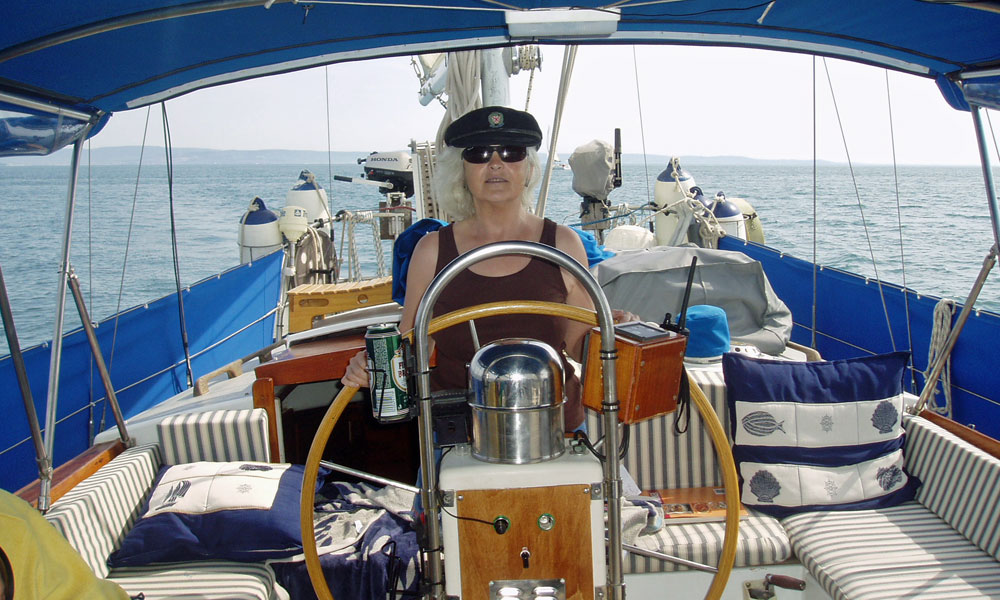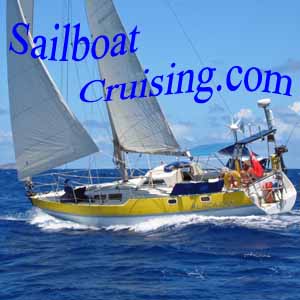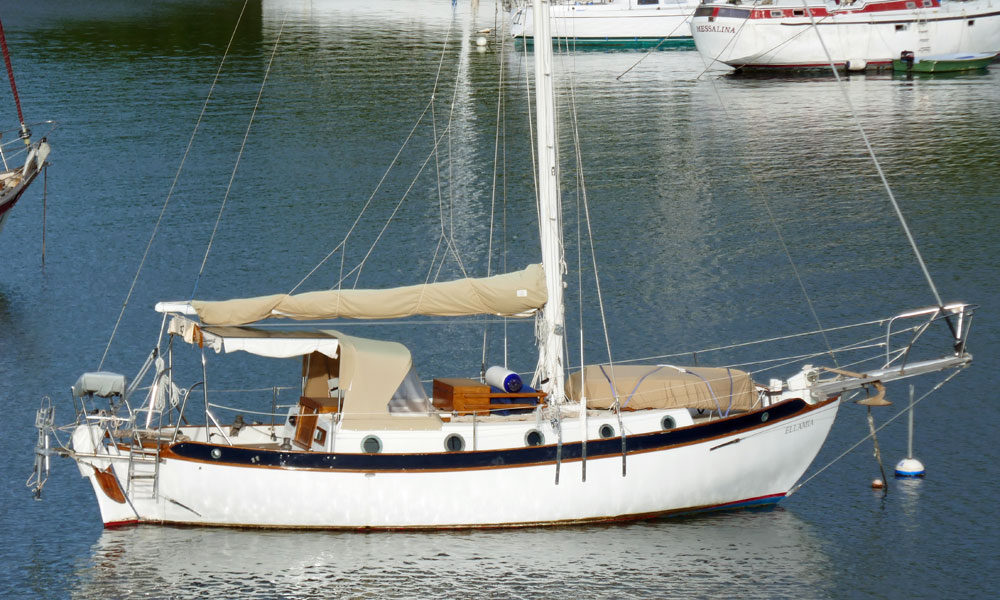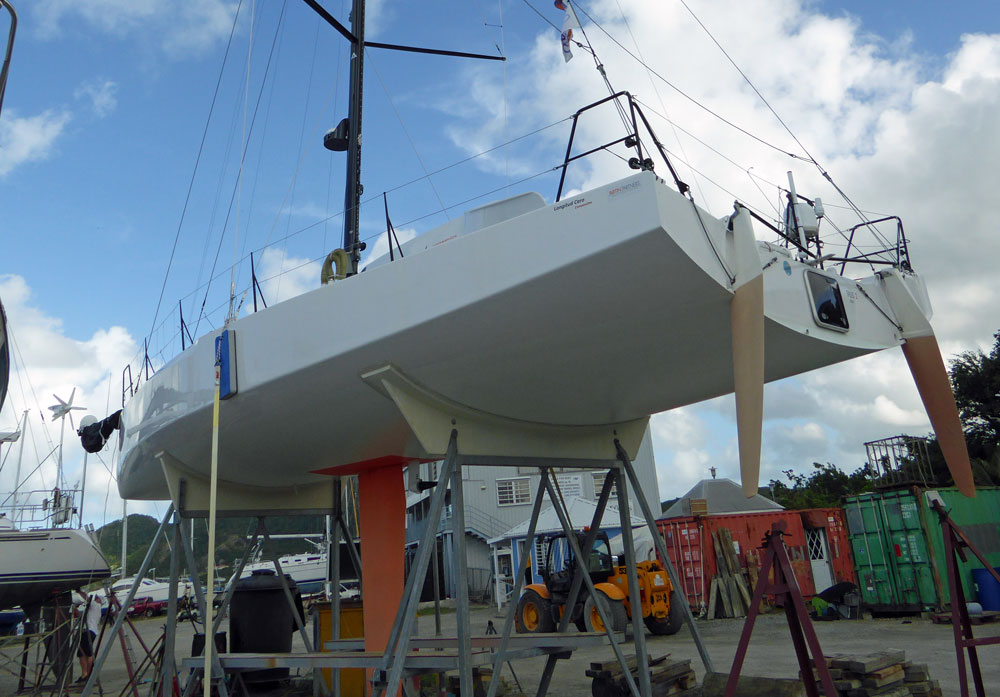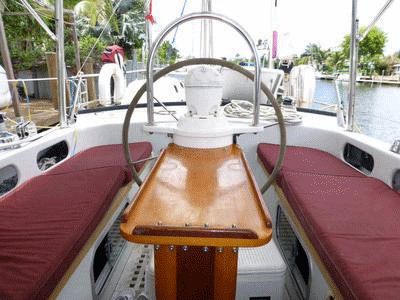- Home
- Design Basics
- Hull Drag
Hull Drag and Wavemaking Resistance
Any boat underway will experience hull drag, defined as the net force opposing forward movement due to the pressure and shear forces acting on the surface of the hull. It's a function of underwater shape and skin friction.
Clearly a rectangular box section would create more drag than a lozenge shape of similar size. Skin friction is created by surface roughness, and at low speeds is the major hull drag component - as much as 65% at an Speed/Length ratio of 1.0, reducing to about 10% at an Speed/Length ratio of 1.5.
And clearly the more 'skin', or wetted area, the greater the total frictional resistance. This is brutally driven home to the heavy-displacement chaps at anti-fouling time, when find they have a lot more scrubbing to do than their light-displacement colleagues and need to dig deeper into their pockets for the required quantity of paint.
But it's not just the marine flora and fauna that create hull drag. Pitted anti-fouling and protruding skin fittings all conspire to slow us up. Each protrusion disturbs lamina flow and creates a turbulent volume of water, rapidly changing its velocity and pressure and spinning off eddies and vortices.
Nature doesn't like pressure difference, even less a vacuum, and always seeks to level things out. The energy required to re-establish laminar flow downstream of the protrusion is drawn from the forward momentum of the boat, which slows down as a consequence.
Incidentally, we sailors should be very grateful that nature exhibits the same tendency in the atmosphere, as without it there'd be no wind.
Wave Making Resistance and Hull Drag
Not to be confused with the resistance experienced when punching through wind blown waves, this is the energy loss due to the wave making characteristics of the boat itself.
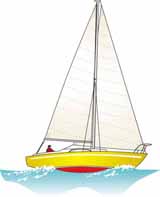 Bow & Stern Waves
Bow & Stern WavesAs a boat moves ahead, the water is parted to allow the hull to move through it.
A transverse bow wave forms at the forward end of the hull and a similar wave is created at the stern.
The back of the bow wave forms a trough, and then a second wave that moves aft as speed increases. Eventually, that second wave will have moved right aft where it combines and reinforces the stern wave.
At this point, the boat is said to have reached 'hull speed' and for many this is as quick as it can ever be expected to sail.
Now, with the bow is supported by the bow wave and the stern by the stern wave, the resistance to greater speed is significantly increased. And it's not difficult to see why. If the stern wave was to move further aft, the stern would drop into the trough.
To go any quicker the boat would have to climb over the bow wave - an uphill struggle in every sense and this occurs at an Speed/Length Ratio of 1.34.
The hull speed on any non-planing vessel can be found by transposing the S/L Ratio formula to:
Hull speed (knots) = Square root of waterline length (in feet) x 1.34
For example:~
|
Waterline Length 20 feet 25 feet 30 feet 35 feet 40 feet 45 feet 50 feet |
Max Hull Speed 6.0 knots 6.7 knots 7.3 knots 7.9 knots 8.5 knots 9.0 knots 9.5 knots |
Planing Hulls
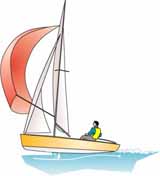 Sailing Dinghy 'on the plane'.
Sailing Dinghy 'on the plane'.So, predictably, the longer the waterline, the greater the hull speed.
But clearly some boats can exceed hull speed since, if this were a limiting factor, a Laser 470 dinghy shouldn't be able to exceed 3.5knots - which of course they do in spades.
So how do they manage to avoid the limitations of hull drag and wavemaking resistance? It's all about power; sail area in a yacht and horsepower in a motorboat.
We sailboat cruisers can experience this heady sensation in our inflatable tenders. Leaving the dock we gradually wind back the throttle until we're cheerfully chugging along at hull speed.
A further twist of the throttle gets us to a bow up, stern down attitude, but we go no faster and use more fuel.
If the outboard motor is powerful enough, another twist of the throttle will level the boat out as the bow wave travels under the hull releasing us to zip across the water at a clip - with hull drag a thing of the past.
Now we can reduce power to something just above that needed to maintain hull speed and still stay on the plane. This happy state of affairs comes to and end when the throttle is closed, the boat slows; the bow wave catches us up, slops over the transom, and soaks the groceries.
Some cruising boats are capable of exceeding hull speed, and a most desirable ability it is too in my view. Provided, that is, the other desirable sailboat attributes aren't too compromised as a result.
Hull speed can only be achieved if the boat carries sufficient sail area to develop the requisite power, and this is more for a heavy displacement boat than it is for one of lighter displacement.
Read more about hull drag, sail area and displacement...
Recent Articles
-
Wauquiez Gladiateur 33 for Sale
Apr 10, 24 05:40 AM
'Kesh', my Wauquiez Gladiateur 33 is only for sale because we've decided to go for a larger sailboat. She currently berthed in Florida, USA. -
'Cabo Frio', a Catalina Morgan 43 for sale
Apr 01, 24 08:35 AM
This Catalina Morgan 43 is for sale at a very reasonable price. She offers up to 7 berths in 2 cabins + saloon. There is full 6'5" standing headroom and good ventilation throughout. -
Live Aboard Boats For Sale
Mar 30, 24 07:02 PM
Ready to live the dream? Then browsing through this listing of live aboard boats for sale might just get you on your way...
